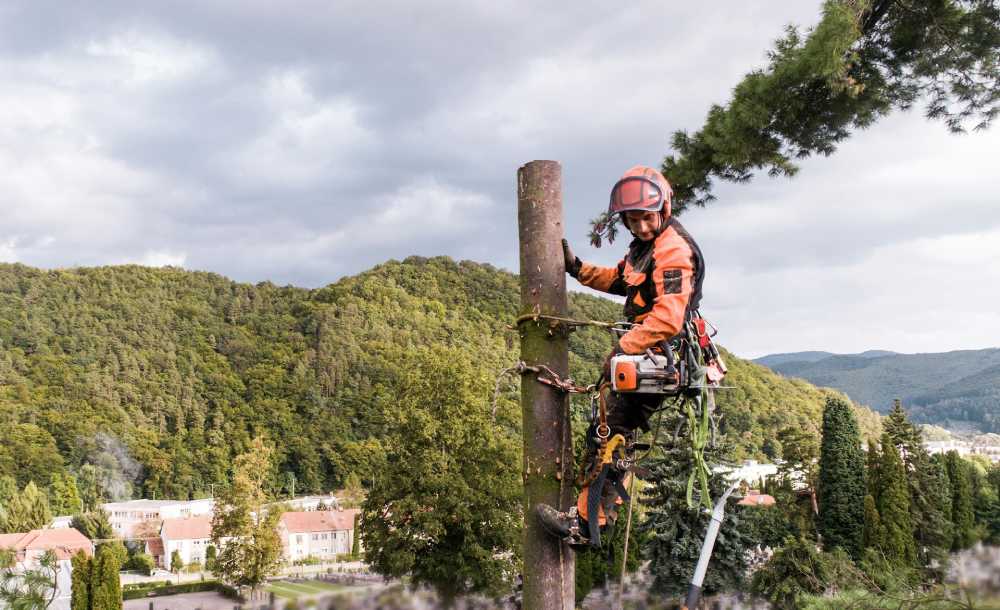
Safety First: Handling Tree Emergencies with Confidence
Trees bring immense benefits to our environment, providing oxygen, enhancing landscapes, and offering shelter to wildlife. However, they also carry potential dangers when neglected or compromised. A comprehensive understanding of tree safety is critical for homeowners, as it prevents property damage and loss of life.
The importance of addressing tree emergencies cannot be understated, as disasters often strike without warning. Partnering with an emergency tree service can ensure swift actions and peace of mind during unforeseen situations.
Activity around trees isn’t just about aesthetics or environmental efforts; it’s about responsibility. Proactive care ensures trees remain assets rather than liabilities. Emergencies such as fallen trees during a storm highlight the significance of being prepared and informed, as they potentially obstruct roads, damage structures, and endanger lives.
Types of Tree Emergencies
Understanding the various types of tree emergencies is vital to formulate an appropriate response and mitigation strategy. These emergencies often occur unexpectedly:
- Storm Damage: During severe weather, trees are particularly vulnerable. Strong gusts, heavy snowfall, or torrential downpours can cause trees to uproot or branches to snap, creating hazardous situations. These storms not only put trees at risk but can also lead to falling trees which can damage homes or power lines, leading to power outages or vehicular accidents.
- Diseased Trees: Fungal infections, bacterial infestations, and other diseases compromise a tree’s structural integrity over time. For instance, the ominous Dutch elm disease has plagued elm populations, making early detection crucial. Diseased trees can thus unexpectedly collapse, especially during windstorms, posing significant risks to nearby structures and people.
- Structural Failures: Often, poor tree maintenance practices contribute to structural weaknesses. Improper pruning techniques can create imbalances, while root disturbances, perhaps from nearby construction, affect a tree’s anchoring ability. Such issues, left unchecked, result in potential tree collapses.
Recognizing Signs of Trouble
Spotting early signs of potential tree problems is a proactive way of managing risks before they escalate. Regularly assess your trees for abnormalities such as leaning trunks, which suggest an imbalance or root problem. Also, monitor for cracked bark, wilting leaves, or fungi growth at the base. These indicators hint at underlying health issues, often signaling that a tree could fall or shed branches. A proactive approach can prevent emergencies and safeguard your surroundings.
How Arborists Can Help
Certified arborists play an indispensable role in ensuring the safety and health of trees. They bring a wealth of knowledge about tree species, diseases, and treatment methods. Whether it’s assessing disease risk or recommending suitable treatments, their expertise is key.
Arborists also carry out critical procedures, such as pruning or removal, ensuring these tasks are done safely and correctly. Their intervention can dramatically reduce the chances of a tree emergency by maintaining the tree’s health and structural integrity. Moreover, during risky situations like a possibly diseased or damaged tree, professional emergency tree removal might be necessary to ensure safety.
Developing an Emergency Plan
Having a well-structured emergency plan is essential for dealing with tree crises effectively. Here’s how to prepare:
- Regular Inspection: Collaborate with professional arborists for periodic inspections. This routine helps identify risks like leaning branches or disease symptoms early. Regular assessments ensure preventive measures are timely and effective.
- Emergency Contacts: Keep updated contact details for local emergency tree services at your fingertips. In case of urgent situations, such as a tree collapse blocking your driveway, swift assistance from these professionals can mitigate further damage or danger.
- Safety Protocols: Educate family members and occupants about safety measures during storms or other crises. For instance, please keep a safe distance from windows and known hazardous trees to make sure you’re safe from falling branches or debris.
Preventive Measures
Preventive measures significantly reduce the likelihood of tree emergencies. Enlist arborists’ services for routine maintenance, such as pruning and cabling, which enhances a tree’s resilience to natural forces. Disease prevention and pest management are equally crucial in maintaining tree health. By investing in regular care and assessment, homeowners can ensure trees remain stable and secure, preventing emergency scenarios.
